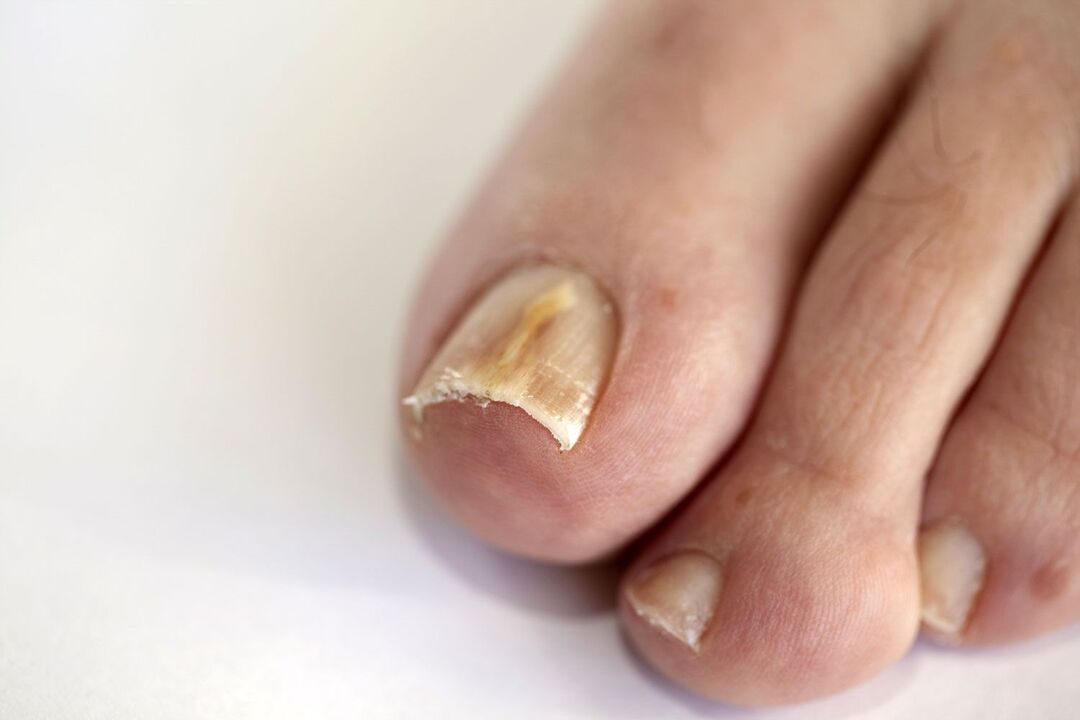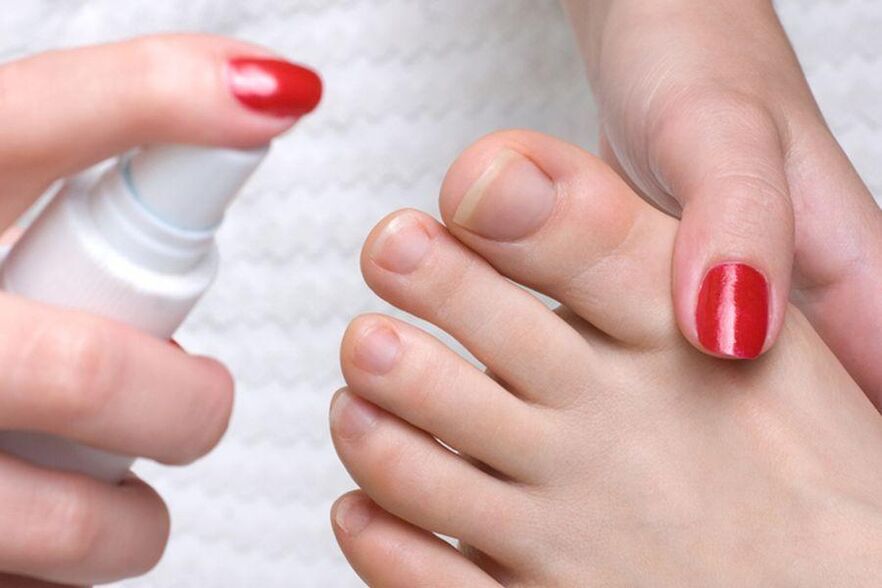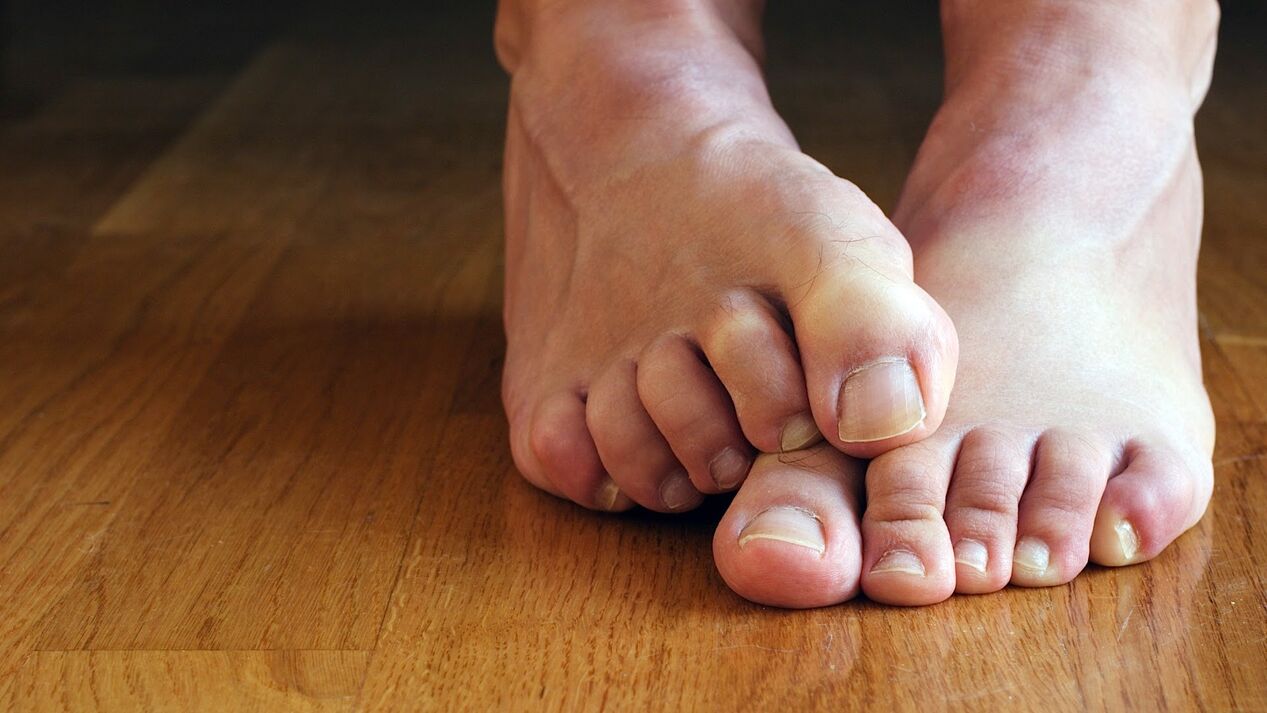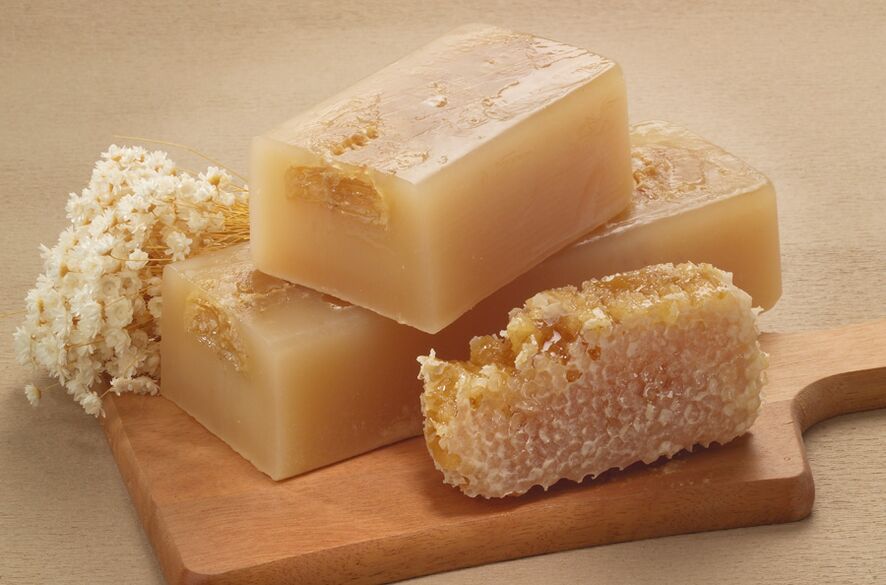If a person has a foot fungus, then the question of how to treat it comes to the fore for him. Among the many forms of this infection, fungi that affect the feet are one of the most common. Its cause is the pathogenic fungal microflora of the species Trichophyton, which, with increased sweating, can affect the skin of the feet and the nail plates on the toes. The birthplace of the microorganism is Southeast Asia, where nature itself has created ideal conditions for its development: a hot and humid climate plus a dense population. In recent years it has spread to Europe and America. Currently, more than 20% of the world's population suffers from skin fungus.
Ways of infection

The most common ways of infection with fungal spores are contact. Most often this happens in the conditions of joint residence or work of a sick and healthy person.
Among the common ways of transmitting fungi to the skin of the feet and nails are:
- common household items that have direct contact with the skin and toenails (bed, socks, shoes, pedicure equipment);
- public baths and showers - as a rule, they are used by people working in dusty and dirty types of production (mines, factories), as well as athletes, recruits who often have to sweat;
- sunbeds, sunbeds and mattresses on the beaches.

To prevent the fungus, it is necessary to strictly observe the rules of personal hygiene, trying to avoid situations in which infection is possible.
The possibility of infection increases with foot sweating, if it is not possible to wash them in a timely manner, change socks and shoes and treat them with antiseptic agents. Therefore, outbreaks of the disease occur most often in field conditions, when during long transitions from foot sweating favorable conditions are created for the reproduction of mold.
In addition to foot sweating, a weak immune status increases the risk of infection. Currently, due to the deteriorating environmental situation worldwide and the rise of diseases such as diabetes, this factor emerges among the leading causes of the spread of this pathology.
Symptoms and diagnosis
Signs of mold on the feet are widely known.
Among them:
- irritation, redness, severe itching and redness of the skin;
- exfoliation of scales from its surface;
- cracks, redness of diapers in the interdigital region;
- deformation of the nails.

Such a pathology in the foot causes many problems and causes victims not only physical but also moral distress:
- the foot becomes inflamed and swollen;
- an unpleasant odor emanates from the affected skin, even if there is no sweating of the feet;
- nails change their color, exfoliate and crumble.
But the symptoms reach this stage of development gradually, if you do not fight the disease. Therefore, at the first signs, you should not look for an effective remedy for foot fungus yourself, but contact a dermatologist - it is he who will have to decide which anti-fungal agents should be used to defeat the pathogen. as soon as possible. With the current level of development of pharmacology and compliance with the recommendations of specialists, it is possible to cure foot fungus quite quickly.
Coming to the dermatologist's office with such complaints, patients first undergo a diagnostic procedure. Clarification of the diagnosis is necessary, as it depends directly on the treatment of foot fungus.
To determine the type of fungal spores, the following methods are used:
- Radiation with a special lamp makes the lesion area particularly visual, as the skin in this place under its rays stands out in the general background, becoming purple-red.
- Bacterial culture based on skin scratches allows, by placing samples in a nutrient medium, to multiply them for the purpose of external observation and clarification of the type of pathogen that caused the development of the disease.
- The PCR technique is the most modern method to date, helping to establish a diagnosis with almost 100 percent certainty, as it is based on fungal DNA analysis.
After receiving the results of the research, choosing the most effective drug against fungi, the doctor offers the patient certain medications and specifies the scheme of their use. To choose the most effective remedy for the fungus, it takes into account factors such as age, health status, concomitant diseases.
Pharmacological arsenal
And yet, choosing a super-effective and inexpensive remedy for a foot fungus that develops, among a fairly considerable number of items, is not an easy task. It can be not only an external medicine, but also an oral preparation - if the external forms were powerless. And yet, as a rule, treatment begins with them.
The main active ingredient of the drug is terbinafine - a drug proven against foot fungus, capable of quickly destroying fungal spores. Both the cream and the oil and the spray from the fungus are applied directly to the skin of the feet, previously washed and dried, while the oil and cream forms should be rubbed lightly on the affected area. In persons who have "caught" mycosis of the foot, the skin often takes on a thicker, thicker, thicker appearance, which is especially characteristic of the feet and heels. The fungus medicine can not penetrate such a "shield", therefore, before starting the treatment, the skin should be steamed in a hot soapy solution to soften the stratum corneum and remove it with a pumice stone anda special grinding file.
With added drying of the epidermis, the base of the antifungal agent should be as oily as possible. This requirement is met by ointments, which should be used in this case. In the interdigital area, where the skin is thinner and more delicate, a sprayer or fungal suspension is effective.
To fight toenail fungus, or more precisely, toenails, special therapeutic varnishes, applied to the nail plate, are also used.
Before application, it should be processed: irregularities are polished, the affected areas are removed as much as possible to help the medication penetrate into the nail tissue.
Sometimes you need to seek the help of a surgeon who completely removes the affected nail plate.
If this is not done, even the most effective remedy for foot fungus will not be able to have a proper level healing effect.
In the most serious and advanced cases, foot mycosis is not suitable only to external agents, as harmful residues of pathogens penetrate into the bloodstream, beginning to poison a person from within. The attending physician then prescribes antifungal antibiotics for oral administration, which have a systemic inhibitory effect on pathogenic microorganisms.
It is impossible to use such powerful remedies for foot fungus without the direct guidance of a specialist, as the consequences of uncontrolled intake can have very serious consequences. One of them is the development of immunity of fungal spores to these drugs and their constituents.
Folk remedies

What helps with foot fungus - pharmacology or folk pharmacy? Only a doctor is able to answer how to cure foot fungus, but it will not be superfluous to consult him for home remedies.
The most reliable tools to help remove foot fungus have long been known:
- Laundry soap from foot fungus. With a fungus, foot baths with this ingredient are beneficial, especially effective for excessive foot sweating. After tearing the laundry soap with 70% brown without any aromatic aroma, take a tablespoon of shavings and mix with a tablespoon of baking soda. Pour the mixture into warm water at 40 degrees, soak your feet in a solution of soap and soda for half an hour. As a steam, foam the skin between the toes and rub the feet with a brush to improve the penetration of the solution ingredients into the upper layers of the epidermis. At the end of the procedure, which should be performed every other day, wash your feet with clean water and apply the external medicine recommended by the doctor on the skin.
- Table vinegar is also a good folk remedy for foot fungus, especially against the shape of nails. Treat your nails carefully, being careful not to hurt them, as this contributes to the deepening of the infection. After pouring hot water into a bowl, the temperature of which should be about 50 degrees, pour a glass of 9% vinegar in the same place. Soak your feet in a vinegar-water solution (there should be enough liquid to completely cover the feet) for 10-15 minutes. Then, without rinsing, dry your feet and wear clean socks. Repeat such baths for mushrooms 3-4 times a week.
- Another good remedy for foot fungus is iodine. An alcoholic solution of iodine should be applied with a cotton swab to the hearth, after washing the feet and treating the nails. When using an iodine solution against foot fungus, it is important to be careful not to burn yourself, especially in the area between the toes.
- Propolis from the fungus is used in the form of applications applied to the nails and the skin around it, after steaming it in a hot soapy solution.

Herbal recipes for skin fungus:
- Euphorbia is an effective remedy against foot fungus. The plant juice should be lubricated with sore nails with a cotton swab.
- Celandine from the fungus - 3 tablespoons. spoons of grass pour 1 liter of water, boil, cool to an acceptable temperature (40-46 degrees) and soak in the foot solution.
- Burdock - to treat foot mold, you need to wrap it with a well-beaten burdock leaf, wear clean socks and go to bed with such a compress.
- Tea tree oil from the fungus on the feet is effective only in the early stages of the disease.
Unfortunately, a remedy that can get rid of foot fungus with one application has not yet been invented. Therefore, when using pharmaceutical and folk remedies for fungus, it is necessary to consult a doctor and follow his recommendations. The best remedy for foot fungus is the one prescribed by your doctor.

























